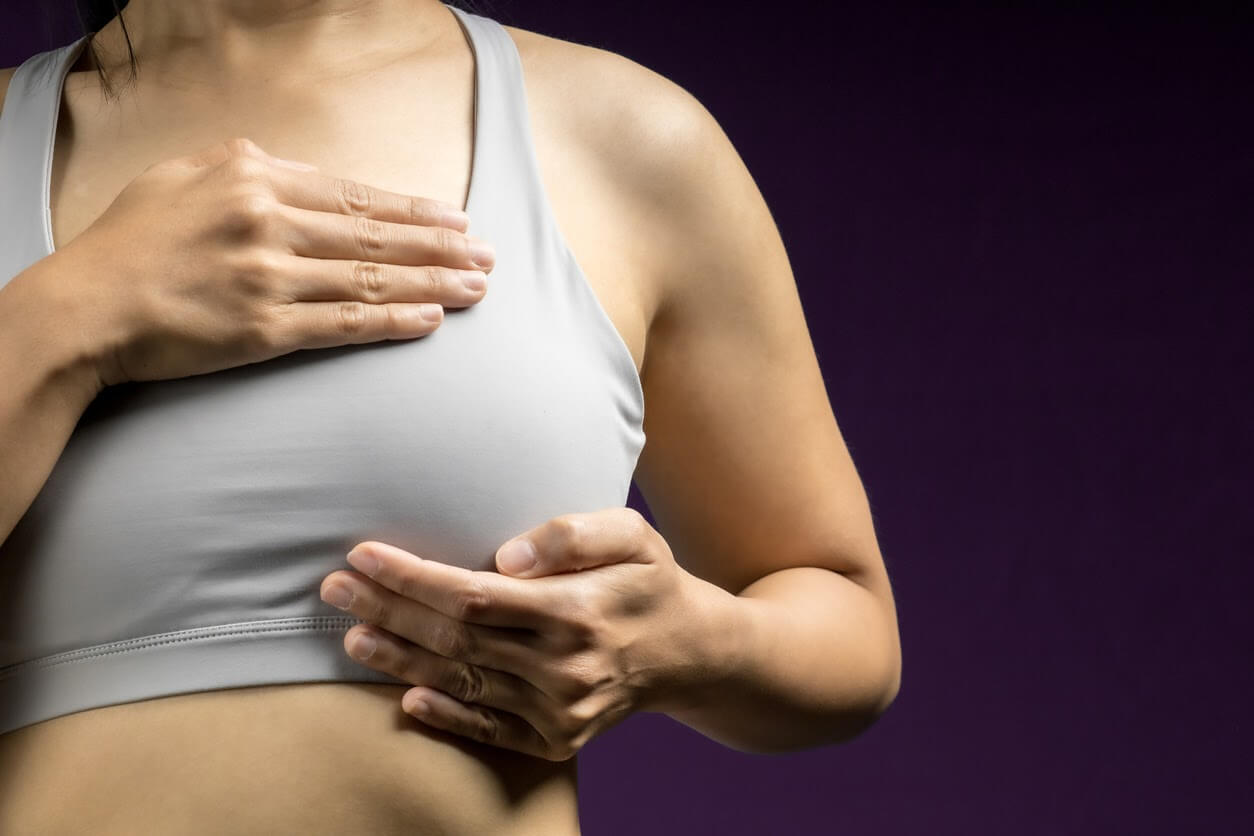Breast exams help you and your doctor check on your breast health. Breast exams, such as mammograms and cancer screenings, can help you find breast cancer in its earliest and most treatable stages. You can do this by getting regular screenings and performing breast self-examinations.
The Importance of a Breast Self-Exam
Breast self-exams are important because they familiarize you with your body so that you know when something is wrong. You can use your eyes and hands to judge when something looks or feels abnormal. Some people can detect lumps which can be the first sign of breast cancer. When you know the normal look and feel of your breasts, you can report the change to your doctor. We recommend breast self-exams in addition to a clinical breast exam every year when you have your annual well-woman visit.
How to Perform a Breast Self-Examination
Since it’s important to examine your breasts visually, start by being shirtless and braless when you start your inspection. Many women prefer to examine their breasts when they get out of the shower because they’re already undressed and damp skin can be easier to examine.
Your breasts may feel more tender during certain times in your menstruation cycle. Your hormones fluctuate during your cycle, which causes a change in breast tissue. Swelling tends to go down after your period starts. Typically, the best time to perform a breast self-exam is a week after your period ends when your breasts are the least sensitive.
Your breast self-exam should include a visual and manual inspection.
Visual Inspection
- Keep your hands pressed down by your hips
- Look for puckering, dimpling, or changes in size or shape
- Check to see if your nipples are inverted
- Check the bottom of your breasts to see if they are symmetrical
- See if anything changes when your hands are raised overhead
- Look for signs of fluid coming out of the nipples. Fluid could be watery, yellowy, milky, or blood
- If you have a visual impairment that makes it difficult for you to see, you can ask a trusted friend or family member
Manual Inspection
- Start by lying down and use your hand opposite to your breast
- Use the tips of your fingers to push down in a circular motion
- Go over the entire breast from the top of your collarbone down to the top of the abdomen, all the way over to the armpit
- Follow a pattern to be sure you cover the whole breast
- Use enough pressure to feel all of the tissue from the front to the back of your breasts
- For the skin use light pressure, for tissue in the middle of your breasts use medium pressure, and use firm pressure to feel the deepest tissue. You should be able to feel your ribcage
- Stand or sit up and follow the same pattern
Contact your doctor if you find a lump, notice a change in the way breasts look or feel, dimples or puckers, redness, warmth, pain, bloody discharge, or itchiness. Most changes found during a breast self-exam are not cancerous, but your doctor may recommend additional testing and cancer screenings to further investigate the finding.
Cancer Screenings
Cancer screenings allow doctors to check for cancer when there are no symptoms. They can result in early detection and increase the person’s life expectancy. The chance of recovery increases when breast cancer is found at an early stage. Mammograms are the most common type of cancer screening, and can often find tumors that are too small to feel. Women aged 50-69 who get regular screening mammograms have a lower chance of dying from breast cancer than women who do not receive regular mammograms.
Types of Breast Exams
Your doctor will be able to recommend what kind of breast exam you should have based on tissue density, age, and family history. The types of breast exams are:
- Mammograms – low-dose x-rays used to examine breast tissue
- Breast Ultrasound – uses sound waves to create images of tissue. This is typically used to evaluate mammogram findings
- Breast Tomosynthesis – creates a 3-D reconstructed image of breast tissue from ultrasounds
- Contrast – Enhanced Digital Mammography- a new technology that injects a dye to help doctors detect cancer
- Breast MRI – use of a magnet and radio waves to create images of breast tissue
- Clinical Breast Exam – a healthcare professional physically examines the entire breast area
- Breast Self-Exam – an at-home breast exam where the individual examines their own breast for lumps and abnormalities
We encourage you to be familiar with your breasts so you can alert your provider when something is different. Get regular cancer screenings and perform breast self-examinations so you can seek treatment if needed.
Are you a patient of Copperstate OB/Gyn? Access your patient portal here, or share your experience with us on Google.
Information in this blog post is for educational purposes only and should not be considered medical advice. Always consult a medical professional to discuss your individual medical situation.
Sources:
- https://www.copperstateobgyn.com/breast-exam/
- https://www.mayoclinic.org/tests-procedures/breast-exam/about/pac-20393237#:~:text=A%20breast%20self%2Dexam%20for,discuss%20these%20with%20your%20doctor.
- https://www.cancer.org/cancer/breast-cancer/screening-tests-and-early-detection/mammograms/mammogram-basics.html
- https://www.mskcc.org/cancer-care/types/breast/mammograms-breast-exams
- https://www.cancer.gov/types/breast/patient/breast-screening-pdq
- https://www.cancer.org/cancer/breast-cancer/screening-tests-and-early-detection/mammograms/mammogram-basics.html
- https://www.webmd.com/breast-cancer/breast-biopsy

